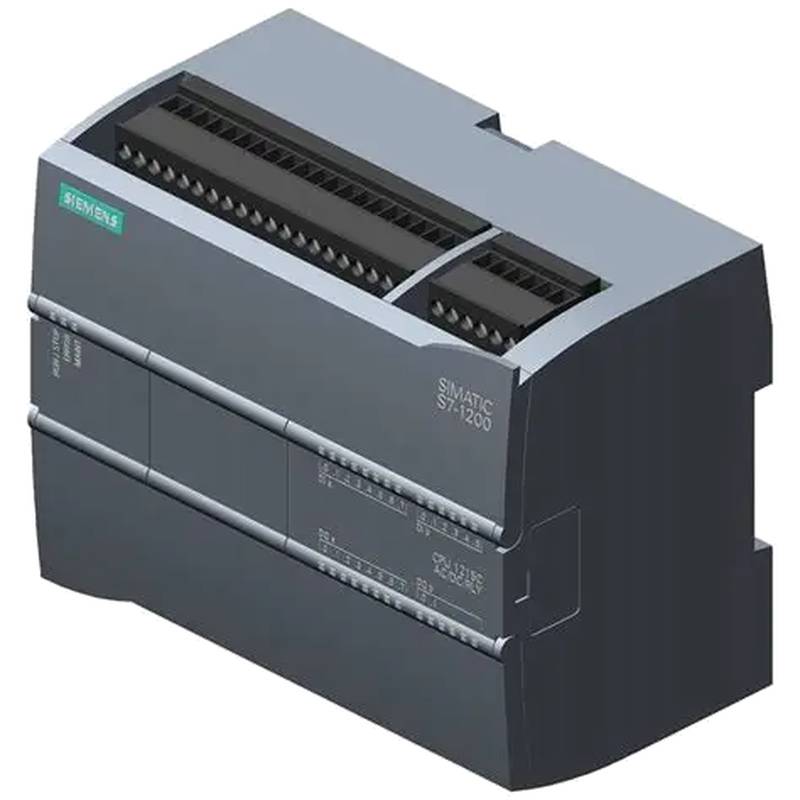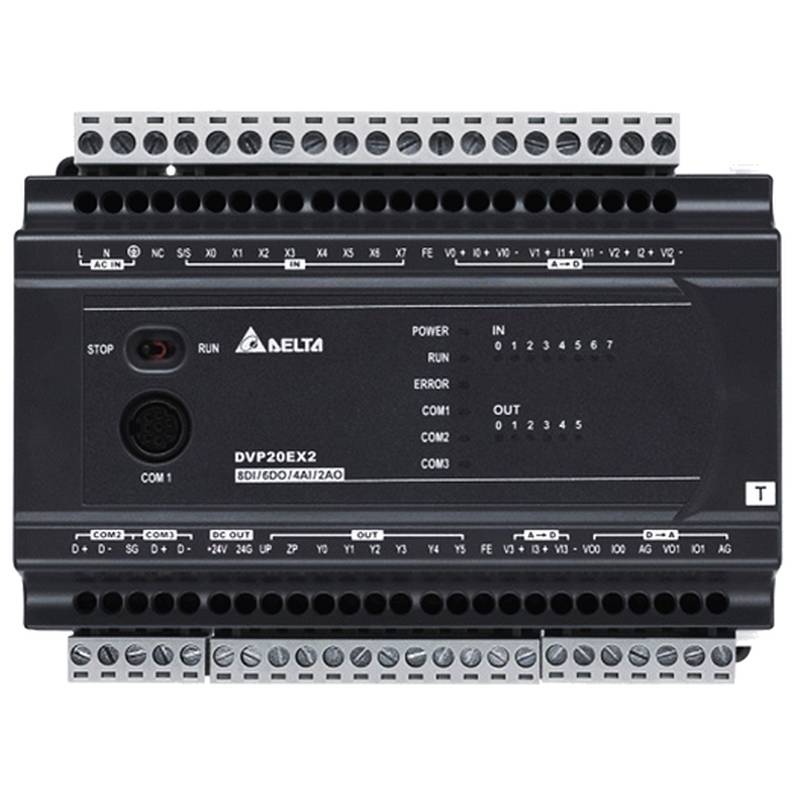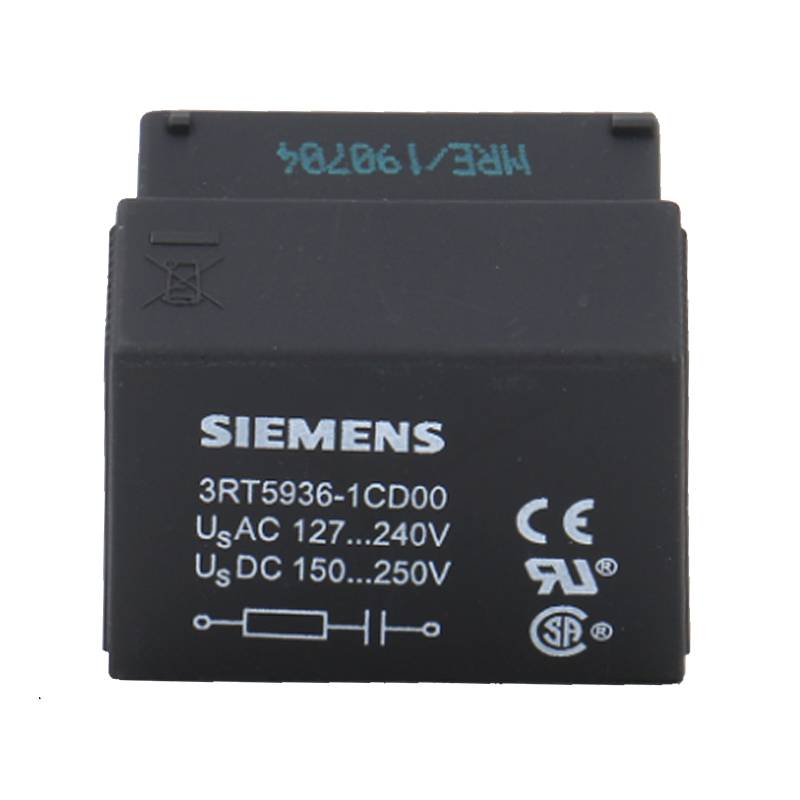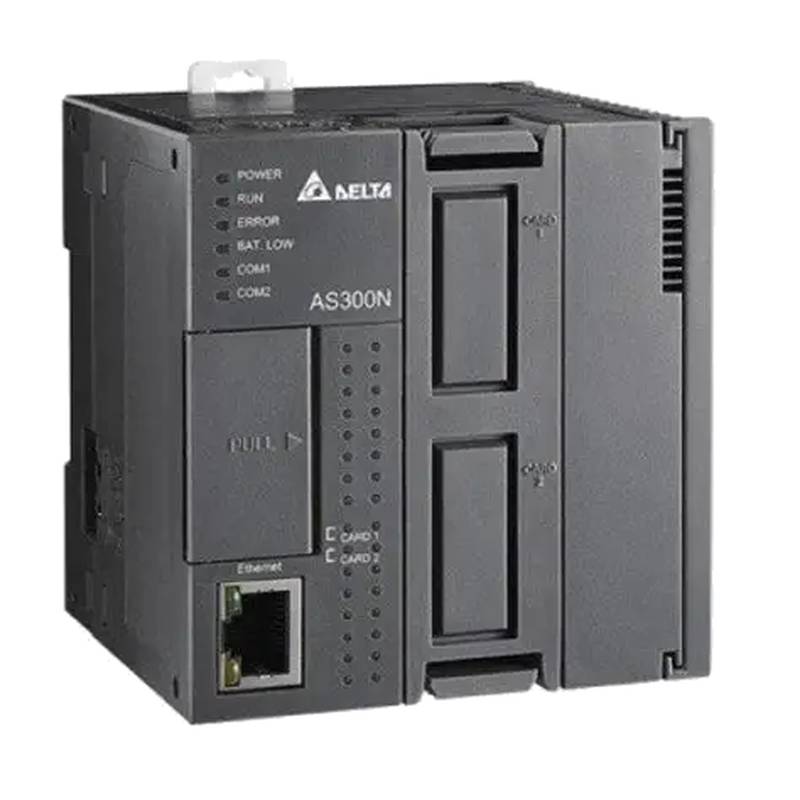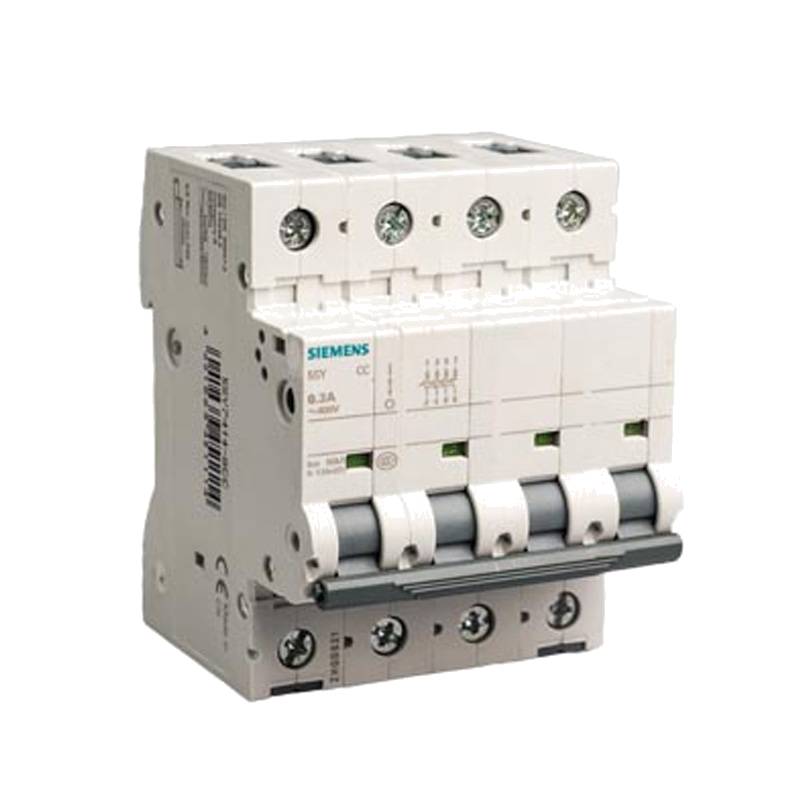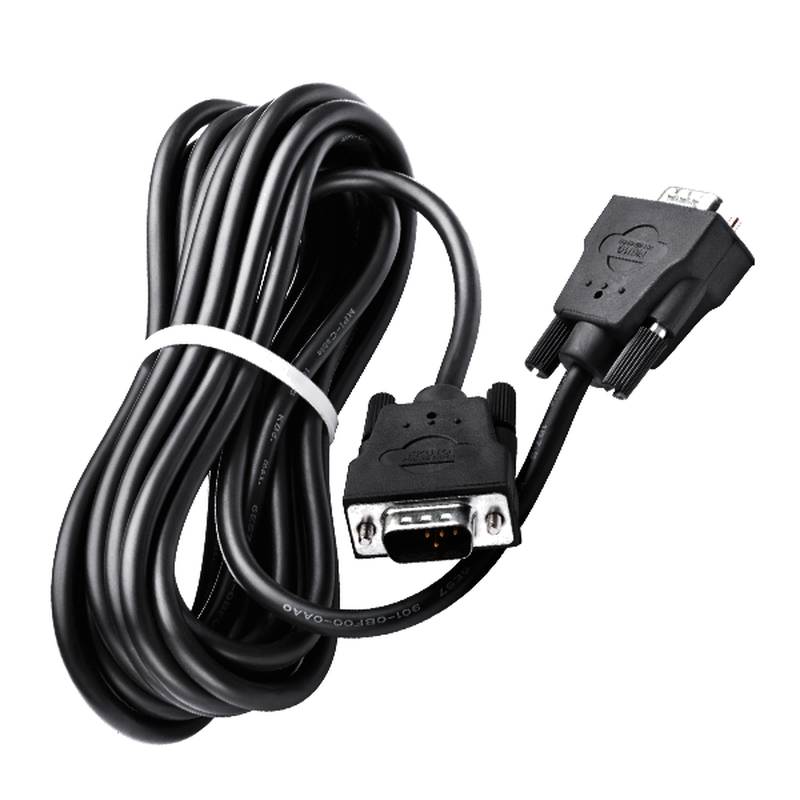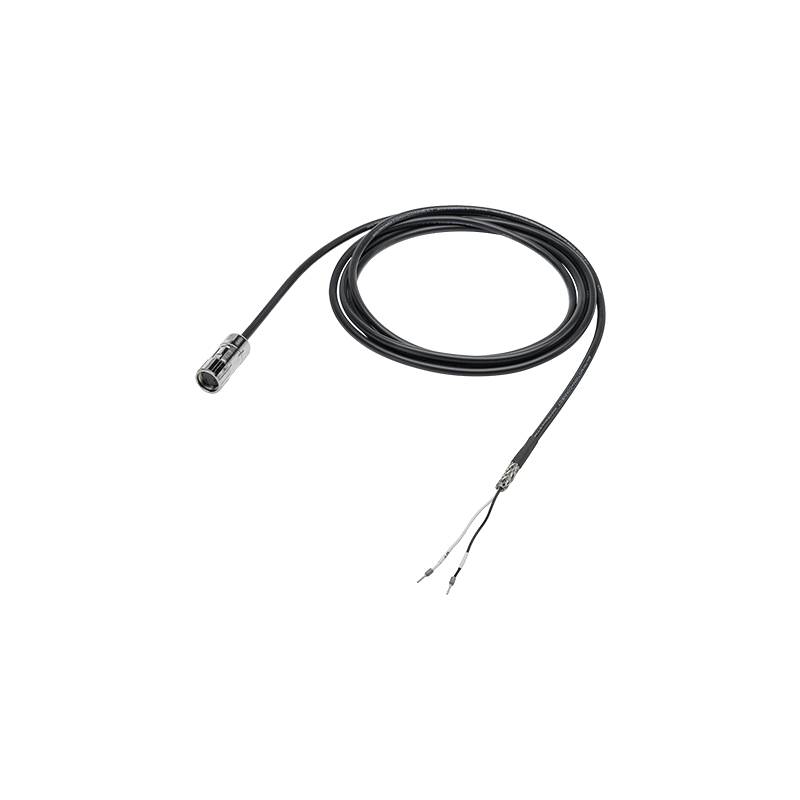
The Siemens 6ES7215-1BG40-0XB0 is a high-performance, compact CPU controller from the SIMATIC S7-1200 series, engineered for robust industrial automation and control applications. This versatile PLC combines significant processing power with a comprehensive set of integrated I/O, making it a cornerstone for demanding machine and plant automation tasks. Its key advantages lie in its high-speed processing, extensive memory capacity, and flexible communication options, all within a space-saving design.
Product Specifications
| Feature | Specification |
| :---------------------- | :------------------------------------------------------------------------- |
| Product Number | 6ES7215-1BG40-0XB0 |
| Series | SIMATIC S7-1200 |
| CPU Type | CPU 1215C (Compact CPU) |
| Power Supply | AC 85-264 V AC at 47-63 Hz |
| Digital Inputs (DI) | 14 x 24 V DC (3 usable as fast counters) |
| Digital Outputs (DO) | 10 x Relay outputs (2 A switching capacity) |
| Analog Inputs (AI) | 2 x 0-10 V DC (10-bit resolution) |
| Analog Outputs (AO) | 2 x 0-20 mA DC (10-bit resolution) |
| Program/Data Memory | 100 KB to 200 KB (varies by source) |
| Load Memory (for program) | Up to 4 MB (with SIMATIC Memory Card) |
| Communication Ports | 2 x PROFINET ports (integrated Ethernet switch) |
| Programming Languages | LAD, FBD, SCL |
| Expansion Capability | Up to 8 signal modules (SM), 3 communication modules (CM), 1 signal board (SB) |
| Operating Temperature | Up to 40 °C for simultaneous inputs |
| Certifications | CE, cULus, FM, UL |
Core Features & Market Positioning
The Siemens 6ES7215-1BG40-0XB0 is positioned as a high-performance solution within the S7-1200 family, offering a compelling balance of processing power, I/O density, and advanced communication capabilities. Its integrated PROFINET ports facilitate seamless integration into modern industrial networks, supporting efficient data exchange and remote diagnostics. The inclusion of analog inputs and outputs, alongside digital I/O, allows for direct integration of sensor and actuator data, simplifying system design for complex control tasks. This CPU is designed to handle demanding applications where speed, reliability, and expandability are paramount, making it a competitive choice against other mid-range PLC offerings. The ability to support advanced functions like PID control with auto-tuning further enhances its market appeal for process automation.
Key Application Scenarios
This Siemens CPU is ideally suited for a wide array of industrial applications requiring precise and reliable control. Common use cases include:
Machine Automation: Controlling complex machinery with multiple axes, high-speed operations, and intricate sequences. Building Automation: Managing HVAC systems, lighting control, and access control in commercial and industrial buildings, ensuring efficient energy usage and operational comfort. Process Control: Implementing precise control loops for manufacturing processes, chemical plants, and water treatment facilities, leveraging its analog I/O and PID capabilities. Material Handling: Optimizing conveyor systems, sorting equipment, and automated warehousing solutions. Specialty Manufacturing: Applications in industries such as automotive, pharmaceuticals, and food & beverage where stringent control and data logging are required.
Practical System Integration Guidance
Integrating the Siemens 6ES7215-1BG40-0XB0 into an existing or new system is facilitated by its modular design and comprehensive software support. Programming is typically performed using Siemens' TIA Portal (Totally Integrated Automation Portal), which supports Ladder Logic (LAD), Function Block Diagram (FBD), and Structured Control Language (SCL).
When wiring the CPU, ensure all connections adhere to local electrical codes and safety standards. The 24V DC digital inputs are designed for standard industrial signals, while the relay outputs provide robust switching capabilities for a variety of loads. For analog I/O, proper shielding of signal cables is crucial to prevent noise interference, especially in environments with high electromagnetic interference. The integrated PROFINET ports allow for direct connection to industrial Ethernet networks. For complex system expansions, up to eight signal modules and three communication modules can be added, providing flexibility to accommodate future needs.
Operation and Risk Mitigation
Safe and efficient operation of the 6ES7215-1BG40-0XB0 relies on proper configuration, programming, and adherence to operating guidelines. It is essential to implement safety interlocks and emergency stop procedures within the control logic to mitigate risks associated with automated processes. Understanding the diagnostic buffer within the TIA Portal is critical for troubleshooting. The CPU logs events and errors, providing valuable insights into system status and potential malfunctions. Common troubleshooting steps involve checking power supply stability, verifying wiring integrity, and examining the diagnostic buffer for specific error codes or messages. Regular firmware updates, managed through TIA Portal, can also enhance stability and address potential vulnerabilities.
Scalability & Long-Term Value
The SIMATIC S7-1200 platform, including the 6ES7215-1BG40-0XB0, offers significant scalability. Its ability to integrate with a wide range of Siemens signal modules (SM), communication modules (CM), and signal boards (SB) allows systems to grow with evolving operational requirements. Furthermore, its PROFINET interface makes it a strong candidate for integration into Industry 4.0 initiatives, enabling connectivity with IIoT platforms, cloud services, and advanced data analytics solutions. This future-proof design ensures long-term value by allowing for seamless upgrades and integration into evolving digital manufacturing ecosystems.
Frequently Asked Questions (FAQs)
Q1: What are the primary advantages of the Siemens 6ES7215-1BG40-0XB0 PLC?
The Siemens 6ES7215-1BG40-0XB0 offers a high degree of integration with 14 DI, 10 DO, 2 AI, and 2 AO, reducing the need for external modules. Its dual PROFINET ports enable robust networking and efficient communication. The compact design saves valuable panel space.
This CPU provides significant processing power and memory for complex automation tasks, supporting advanced functions like PID control. Its reliability and expandability make it a long-term investment for various industrial applications.
The S7-1200 series, including this CPU, is well-integrated with Siemens' TIA Portal software, simplifying programming, diagnostics, and integration with other Siemens components.
Q2: How can I program the Siemens 6ES7215-1BG40-0XB0?
Programming is achieved using Siemens' TIA Portal (Totally Integrated Automation Portal) software suite. This platform supports multiple programming languages, including Ladder Logic (LAD), Function Block Diagram (FBD), and Structured Control Language (SCL).
Ensure you are using a compatible version of TIA Portal, such as V13 SP1 or higher, as indicated by some product documentation. This software provides a comprehensive environment for configuring hardware, writing code, simulating, and troubleshooting.
Before programming, connect the CPU to your PC via an Ethernet cable. Establish an online connection within TIA Portal to download your program and configure the PLC's parameters.
Q3: What are the typical applications for the 6ES7215-1BG40-0XB0 CPU?
This CPU is widely used in machine building for controlling automated equipment and assembly lines. It's also suitable for building automation tasks, such as HVAC and lighting control systems.
Its integrated analog I/O makes it ideal for process control applications, including manufacturing, water treatment, and chemical processing where precise variable monitoring and control are essential.
The robust networking capabilities with PROFINET make it suitable for distributed control systems and integration into larger SCADA or MES environments.
Q4: Can the Siemens 6ES7215-1BG40-0XB0 be expanded with additional I/O modules?
Yes, the CPU 1215C is designed for expandability. It supports the addition of up to eight Siemens Signal Modules (SM) for increased digital or analog I/O points.
Additionally, it can accommodate up to three Siemens Communication Modules (CM) for expanding network capabilities, such as adding serial interfaces (RS-232, RS-485) or other industrial protocols. A single Signal Board (SB) or Communication Board (CB) can also be directly mounted on the CPU.
This modular expansion capability allows users to tailor the system precisely to their current needs and easily scale up as requirements change without replacing the entire CPU.
Q5: What type of memory does the 6ES7215-1BG40-0XB0 have?
The CPU 1215C has integrated program and data memory, typically ranging from 100 KB to 200 KB, depending on the specific firmware version or documentation source. This memory is used for storing the user program, data blocks, and runtime variables.
For larger projects or applications requiring extensive data logging or recipe management, the CPU supports expandable load memory via a SIMATIC Memory Card, which can be up to 4 GB.
The CPU also features a retentive data area for storing critical data like timers, counters, and flags, which is maintained even during power outages, ensuring data continuity.
Q6: How does the PROFINET communication on this CPU work?
The Siemens 6ES7215-1BG40-0XB0 features two integrated PROFINET ports, effectively acting as an Ethernet switch. This allows for direct connection to industrial Ethernet networks and facilitates communication with other PROFINET-enabled devices, such as HMIs, drives, and other PLCs.
PROFINET enables high-speed, deterministic communication, essential for real-time control applications. It supports features like IRT (isochronous Real-Time) for demanding motion control tasks and PROFIenergy for energy management.
These ports allow for easy daisy-chaining of devices or connection to a network switch, simplifying network topology and reducing the need for external communication hardware.
Q7: What are the power requirements for the 6ES7215-1BG40-0XB0?
The CPU 1215C operates on an AC power supply with a wide input voltage range of 85 to 264 V AC at a line frequency of 47 to 63 Hz. This broad range makes it suitable for various global power grids without requiring external voltage converters.
The typical current consumption is around 100 mA at 120 V AC and 50 mA at 240 V AC, with a maximum consumption of up to 300 mA at 120 V AC. It also draws a maximum of 1600 mA from the 5V DC backplane bus for powering signal modules.
It's important to ensure a stable and reliable power source to prevent operational interruptions and potential damage to the CPU or connected devices.
Q8: How do I handle potential faults or errors with this CPU?
Troubleshooting is typically performed using the diagnostic buffer within the TIA Portal software. This buffer logs all significant system events, including hardware faults, communication errors, and program exceptions, providing crucial diagnostic information.
When an error occurs, check the diagnostic buffer for specific error codes and messages. These often point to the root cause, such as a wiring issue, a faulty sensor, or a programming error. Video resources and Siemens support documentation provide detailed explanations for common error codes.
Beyond the diagnostic buffer, visual indicators on the CPU (like LED status lights) and systematic checks of wiring, power, and I/O signals are essential for pinpointing and resolving issues effectively.
Q9: What is the difference between the 100KB and 200KB memory specifications for this CPU?
The difference in program/data memory capacity (e.g., 100 KB versus 200 KB) typically refers to variations between different firmware versions or slightly different product revisions. The core functionality remains largely the same, but a larger memory capacity allows for more complex programs or greater data storage.
Always refer to the specific product datasheet or manual for the exact memory specifications associated with your particular firmware version. TIA Portal will also reflect the available memory when you create or open a project.
While some sources cite 100 KB and others 125 KB or 200 KB, the S7-1200 platform is designed to accommodate a wide range of program sizes, and for very large projects, expandable load memory via a memory card is the primary solution.
Q10: Is the Siemens 6ES7215-1BG40-0XB0 compatible with Industry 4.0 and IIoT applications?
Yes, the 6ES7215-1BG40-0XB0 is well-suited for Industry 4.0 and IIoT integration due to its built-in PROFINET communication capabilities. PROFINET allows for seamless data exchange with higher-level systems like SCADA, MES, and cloud platforms.
This CPU can be integrated into systems that leverage OPC UA, MQTT, or other standard industrial communication protocols, enabling data acquisition for analytics, predictive maintenance, and remote monitoring.
By leveraging its networking features and compatibility with TIA Portal's extensive libraries and functionalities, the S7-1200 CPU provides a solid foundation for modern, connected industrial environments.














